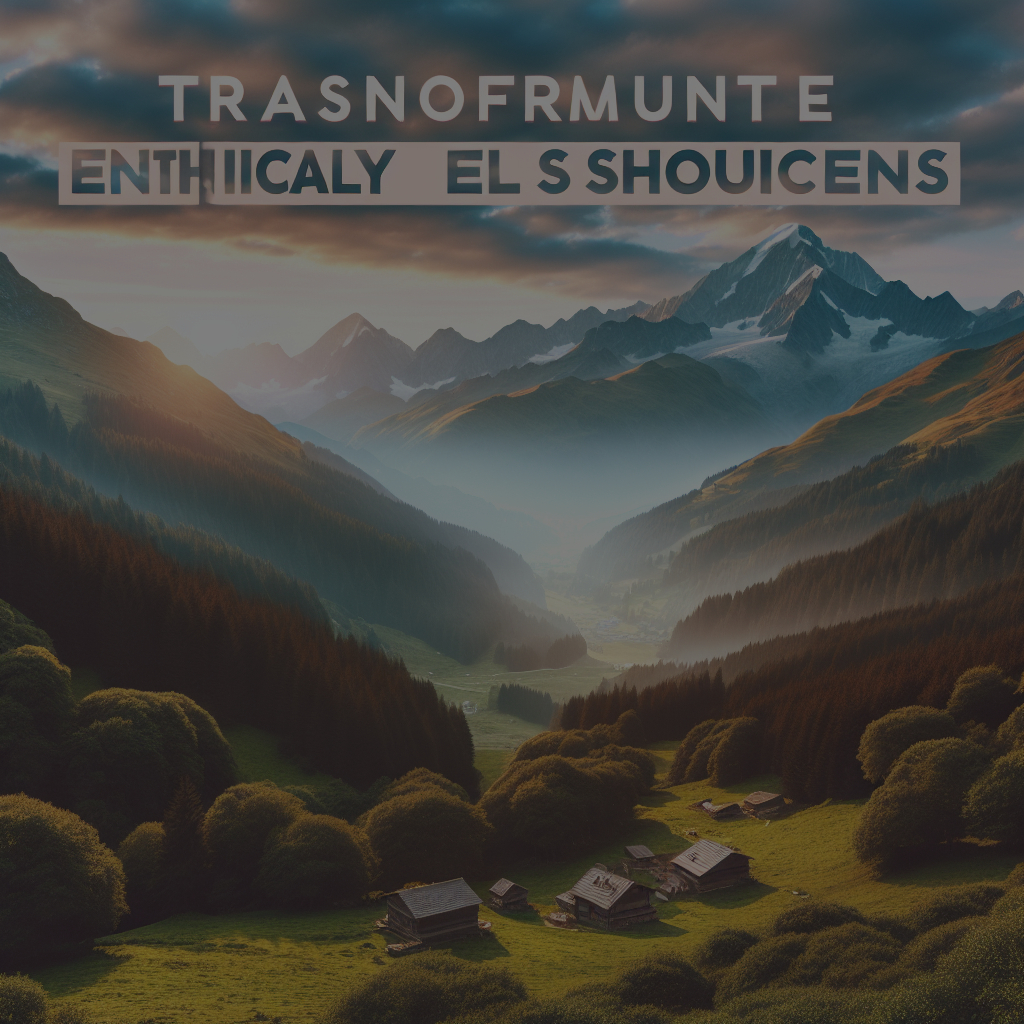
Ethical sourcing is revolutionizing the way alpine beauty brands operate, bringing a new level of integrity and sustainability to the industry. This article delves into the transformative impact of ethical sourcing on alpine beauty brands, exploring how it enhances product quality, supports local communities, and promotes environmental stewardship.
The Importance of Ethical Sourcing in Alpine Beauty
Ethical sourcing refers to the practice of obtaining ingredients and materials in a manner that respects the environment, workers, and local communities. For alpine beauty brands, this means sourcing botanicals and other natural ingredients from the pristine alpine regions in a way that preserves the ecosystem and supports the livelihoods of local farmers and harvesters.
One of the primary reasons ethical sourcing is crucial for alpine beauty brands is the unique biodiversity of alpine regions. These areas are home to a variety of rare and potent plants that have been used for centuries in traditional beauty and wellness practices. By sourcing these ingredients ethically, brands can ensure that these valuable resources are not depleted and that the natural balance of the ecosystem is maintained.
Moreover, ethical sourcing helps to build trust with consumers. In an age where transparency and sustainability are increasingly important to customers, brands that can demonstrate their commitment to ethical practices are more likely to gain loyalty and support. This not only enhances the brand’s reputation but also contributes to a more sustainable and equitable beauty industry.
Supporting Local Communities Through Ethical Sourcing
One of the most significant benefits of ethical sourcing is its positive impact on local communities. Alpine regions are often home to small, rural communities that rely on agriculture and harvesting for their livelihoods. By sourcing ingredients ethically, beauty brands can provide these communities with fair wages, safe working conditions, and opportunities for economic development.
For example, some alpine beauty brands partner directly with local farmers and cooperatives to source their ingredients. This not only ensures that the ingredients are of the highest quality but also provides a stable income for the farmers. Additionally, these partnerships often include training and support for sustainable farming practices, which can help to improve crop yields and reduce environmental impact.
Furthermore, ethical sourcing can help to preserve traditional knowledge and practices. Many alpine communities have a deep understanding of the local flora and its uses in beauty and wellness. By working with these communities, beauty brands can tap into this knowledge and incorporate it into their products, creating unique and effective formulations that honor traditional wisdom.
Environmental Stewardship and Ethical Sourcing
Environmental stewardship is a core component of ethical sourcing. Alpine regions are particularly vulnerable to the impacts of climate change and over-harvesting, making it essential for beauty brands to adopt sustainable practices. Ethical sourcing involves careful management of natural resources to ensure that they are not depleted and that the environment is protected for future generations.
One way that alpine beauty brands can practice environmental stewardship is by implementing sustainable harvesting methods. This might include rotating harvest areas to allow plants to regenerate, using manual harvesting techniques to minimize damage to the ecosystem, and avoiding the use of harmful chemicals and pesticides. By taking these steps, brands can help to preserve the delicate balance of alpine ecosystems and ensure the long-term availability of natural ingredients.
In addition to sustainable harvesting, ethical sourcing also involves reducing the overall environmental footprint of the supply chain. This can include measures such as minimizing transportation distances, using eco-friendly packaging, and reducing waste. By adopting a holistic approach to sustainability, alpine beauty brands can make a significant positive impact on the environment.
Case Studies: Alpine Beauty Brands Leading the Way
Several alpine beauty brands are setting the standard for ethical sourcing and sustainability. These brands serve as inspiring examples of how ethical practices can transform the beauty industry and create positive change.
Brand A: Pioneering Sustainable Harvesting
Brand A is renowned for its commitment to sustainable harvesting practices. The company sources its ingredients from high-altitude alpine meadows, working closely with local farmers to ensure that the plants are harvested in a way that allows them to regenerate naturally. Brand A also invests in reforestation projects and supports biodiversity conservation efforts in the regions where it operates.
Brand B: Empowering Local Communities
Brand B has established strong partnerships with alpine communities, providing fair wages and investing in community development projects. The company sources its ingredients directly from local cooperatives, ensuring that the benefits of its business are shared with the people who cultivate and harvest the plants. Brand B also offers training programs to help farmers adopt sustainable practices and improve their livelihoods.
Brand C: Innovating with Eco-Friendly Packaging
Brand C is a leader in eco-friendly packaging, using biodegradable and recyclable materials for its products. The company is committed to reducing its environmental footprint and has implemented a comprehensive sustainability strategy that includes ethical sourcing, waste reduction, and carbon offset initiatives. Brand C’s innovative approach to packaging has set a new standard for the beauty industry and inspired other brands to follow suit.
The Future of Ethical Sourcing in Alpine Beauty
The future of ethical sourcing in alpine beauty looks promising, with more brands recognizing the importance of sustainability and social responsibility. As consumer awareness continues to grow, the demand for ethically sourced products is likely to increase, driving further innovation and positive change in the industry.
One emerging trend is the use of technology to enhance transparency and traceability in the supply chain. Blockchain and other digital tools can provide consumers with detailed information about the origin of ingredients, the conditions under which they were harvested, and the environmental impact of the production process. This level of transparency can help to build trust and ensure that brands are held accountable for their sourcing practices.
Another important development is the growing emphasis on regenerative agriculture. This approach goes beyond sustainability to actively restore and enhance the health of ecosystems. By adopting regenerative practices, alpine beauty brands can contribute to the long-term resilience of alpine regions and create a more sustainable and equitable beauty industry.
In conclusion, ethical sourcing is transforming alpine beauty brands by promoting sustainability, supporting local communities, and protecting the environment. As more brands embrace these practices, the beauty industry as a whole can move towards a more ethical and sustainable future. By prioritizing ethical sourcing, alpine beauty brands can create products that are not only effective and luxurious but also aligned with the values of today’s conscious consumers.

